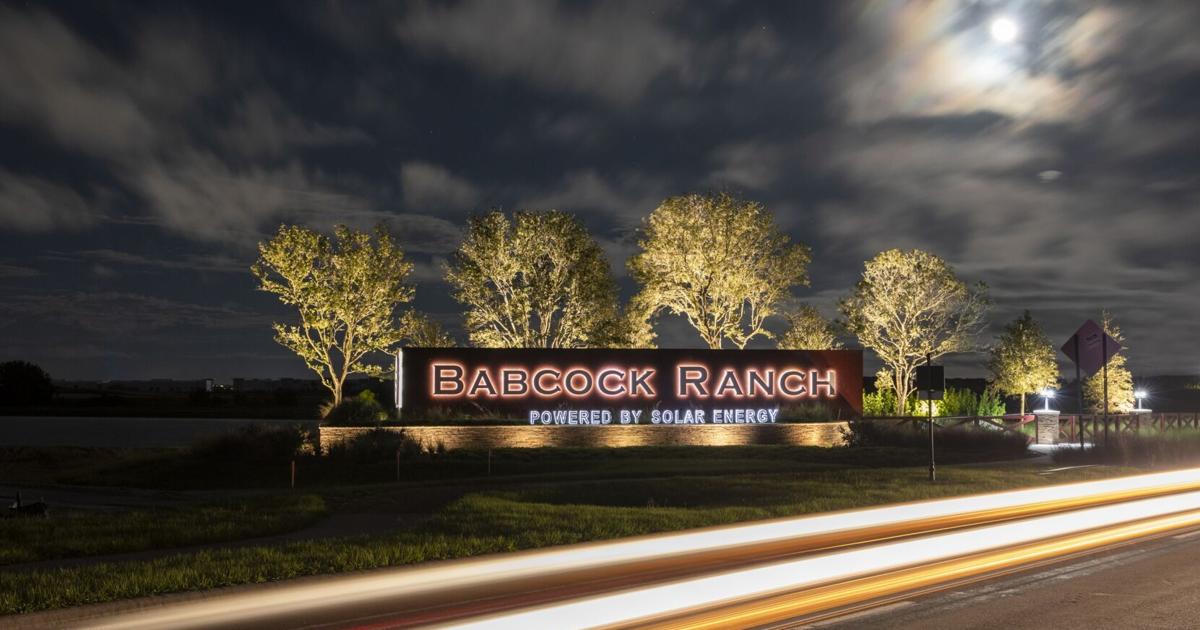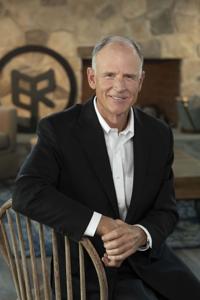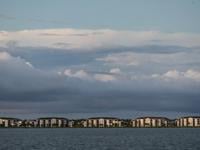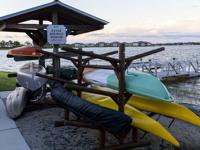When Kitson & Partners set out to build Babcock Ranch, the developer sold more than 73,000 of its 91,000 acres to Florida and Lee County for preservation. About half of the remaining 18,000 acres on which the town is rapidly growing also will be preserved.
That agreement was the foundation for Babcock’s stormwater management systems, resilient building practices, efforts to maintain biodiversity, preservation of wildlife corridors and focus on energy efficiency, with a vast solar array.
Syd Kitson
Kitson & Partners
Since Kitson & Partners CEO Syd Kitson decided to develop a community on those terms in 2006, that combination of conservation-minded features was rare. Now Babcock’s features represent the increasing demand that developers and their partners face to create environmentally sound communities.
“In my opinion, today the vast majority of developers are very conservation minded,” said Ben Wilson, Southwest Florida general manager for Suffolk Construction. “In most cases, you’re marketing the geography, and you have to maintain the geography to maintain something that’s marketable.”
Local governments, consumers, investors and insurance companies are among the stakeholders that seek what the Urban Land Institute’s Lindsay Brugger calls “nature positive” development. She points to Babcock Ranch as among the leaders of this trend, with its potential for enhanced marketability, higher property values, lower operating costs and reduced risk from flooding and storm damage.
“I think the tagline here is, nature positive development is good for business,” said Brugger, ULI’s vice president of urban resilience.
Kitson agrees.
“In order for [a development] to be successful, it has to work economically,” he said. “And I think what we’re proving is, it does work, and because of that we’re going to see more of it. And that’s capitalism hopefully at its best.”
Homes along the Babcock Ranch lakefront reflect the community’s mix of modern development and preserved natural landscape.
Evan Williams
While each development faces unique challenges, Kitson hopes that developers use Babcock’s features as a template for conservation-minded housing and commercial spaces that will be needed as the area continues to absorb population growth. The town is expected to have more than 19,500 homes, some 60,000 people and 6 million feet of commercial space at full buildout.
“I think it is a model for how to build the right way, to really provide the housing that is needed in Florida, but also throughout the country,” Kitson said. “Other developers might not be able to do it like we did it and that’s okay, as long as they’re thinking about how they live and work with the environment in a pragmatic and thoughtful way.”
For Kitson, striking the right balance between conservation and development started with preserving land and using it as part of a water management system.
“Again, understanding the flow of water, how the natural systems work, how the hydrology works and being able to preserve as much of the land as possible,” he said.
Kitson also cites Babcock’s requirements for use of native plants that better withstand regional weather, the town’s hardened infrastructure and underground utilities with redundant backup systems as features that could be implemented by a wide variety of developers.
“All those things, people can use the playbook to do the same thing,” he said. “Our goal has always been for people to kind of copy the good things that we’re doing and hopefully do things even better.”
Kayaks rest at the community’s waterfront storage area, part of Babcock Ranch’s commitment to outdoor living and environmental balance.
Evan Williams
Recent hurricanes highlighted the need for effective stormwater management bolstered by conservation. Babcock Ranch sustained little damage during Hurricane Ian and never lost power, saving on both rebuilding costs and loss of downtime.
“I think you’ll see a lot of developers are really paying attention to how they build in light of what’s going on,” Kitson said. “I think insurance companies are also keeping an eye on that.”
In Cape Coral, nearly half of the planned 1,745-acre Hudson Creek community is set to be in perpetual conservation, said Justin Thibaut, president and CEO of LSI Companies Inc., who represented the seller in the $100 million deal.
In Estero, the 6,700-acre Kingston community being developed by Cameratta Cos. boasts nearly 3,300 preserved acres among its nature positive features.
“With growth you do need housing,” said Nick Cameratta, chief operating officer of Cameratta Cos. “But I think it’s very important that with that housing you are taking into account anything you can do as far as the environmental benefits and enhancements that can provide a benefit to the ecosystem.”




